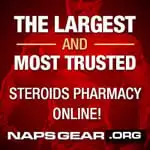Ok well since I couldn't find it, I typed the fucking thing for you.
Flex: June 2002
The Wight Stuff
Kill Pain, Kill Growth?
Taking aspirin and other common pain relievers may hurt your progress.
By: Jim Wright, PHD, Science Editor.
<begin article>
Q: What's the deal with bodybuilders and painkillers? It seems like all the people in my gym who train heavy are taking aspirin or ibuprofen. These guys are hardcore, so I know they're not just babying themselves. Is it a good idea to take things that mas pain when training?
A: I know many bodybuilders and strength athletes who like to pop a Tylenol or Advil after doing some heavy training. Why no experience less pain by using effective over-the-counter medications?
I'll tell you why. Evidence is accumulating that taking these painkillers may be a bad idea for bodybuilders and other weight trainers. One new study indicates that some common pain medicines inhibit muscle protein synthesis! Scary thought, I know.
OH, THE PAIN - Aspirin and other common pain relievers are terrific medicines that help people manage all kinds of pain from headaches to sore toes. Known collectively as nonsteroidal drugs (NSAIDs), which are available over the counter and include aspirin, ibuprofen (e.g., Motrin and Advil), naproxen (e.g., Aleve), ketoprofen (e.g., Orudis) and acetaminophen (e.g., Tylenol). As the name indicates, NSAIDs reduce inflammation and pain, and most NSAIDs also reduce body temperature during a fever.
Effective as they are, you should think twice about taking them for muscle soreness. It appears that NSAIDs can limit the capacity of muclse to synthesize protein and repair iteself after exercise-induced muscle damage and other injuries. And if NSAIDs inhibit recovery, they also inhibit muscle growth. I've indicated this before, in earlier articles based on findings presented at the 2001 convention of the American College of Sports Medicine. But what really drove home the point was a highly credible report from exercise scientists that recently appeared in a respected journal.
Suprisingly, this new research found that none of the NSAIDs studied had any effect on biochemical markers of muscle damage or soreness, meaning they had minimal, if any, beneficial effects on musculoskeletal inflammation. The most important finding, though, was that NSAIDs significantly suppressed the normal increase in muscle protein synthesis caused by exercise (and which occured in the group taking the placebo).
LEARNING TO LOVE PAIN: Pain is your body's way of telling you something's wrong. Of course, if it's typical work-induced muscle pain, that's one thing. That's a satisfying type of pain. If it's joint or connective tissue pain, that's something else entirely. If you try to mask joint pain enough so that you can train heavy, mistakenly believing that suppresing inflammation will enhance training and recuperation, you're in for a rude awakening. If you are simply avoiding dealing with a training injury, you're setting yourself up for a much more serious problem.
With regard to training injuries, try to determine the cause, don't just treat the pain. Become a form freak. Perform an exercise with pristine form, which should ensure that the weight is appropriate. If you're injured, rest and see a physician. Don't tempt fate.
If you're taking pain relievers because you're ill iwth a fever or some other ailment, you shouldn't be training anyway. The longer a high fever lasts, the longer it takes for you to rebound fully. Antibiotics you may be taking can increase the risk of injury. Be disciplined and be patient, or you risk having a relapse or impaired recuperation and an increased possibility of injury.
If you are taking NSAIDs for any reason, use them as directed. These agents are not intended for prolonged use without medical supervision. Long-term use, escpecially at high dose levels, is more likely to cause gastric bleeding (even ulcers), water retention, alterations of liver function, altered blood clotting and more. These effects can go unnoticed for long periods, if not indefinitely, in individuals like bodeybuilders. But that doesn't mean that the effects are not occuring and adversely influencing growth and recovery.
The point is clear: Don't take NSAIDs lightly. Although they're available ove the counter, they are still potent medications. No matter what you hear from the big guys who believer that exercise and NSAIDs go hand and hand, stop and think about why you hurt. For bodybuilders more than anybody else, this saying is true: Pain is your friend.
~~Dr. Wright
THE STUDY: HOW PAINKILLERS INHIBIT MUSCLE GROWTH
The researchers assigned 24 young men, who were sedentary or recreationally active buy not on any training program, to one of three groups. On each of 10 days during the study, one group recieved the maximal over-the-counter (OTC) dose of 1,200 milligrams (mg) of ibuprofen; and another recieved the maximal OTC dose of 4,000 mg acetaminophen; the thrird recieved a placebo. The doses were divided into thirds and administered at 8am, 2pm, and 8pm
Diets of all participants were completely controlled and delievered 1.2g of protein per kg of bodyweight per day, with the remaining calories required by each person coming from carbs (55%) and fat (25%).
Muscle damage and soreness were produced by having each person perform 10 sets of 10 reps of eccentric ("negative") one-leg knee extensions with 60 sec of rest between sets. The resistance used was 120% of the person's predetermined concentric one-rep max. Individuals who could not perform 10 reps per set due to failure (inability to make the movement last a half second or more) actually performed a many as 14 sets in order to complete 100 total reps. This sequence produced exquisite soreness, as well as demonstrably damaged muscle fibers.
For bodybuilders, the most relevant finding was that NSAIDs significantly suppressed the normal increase in muscle protein synthesis caused by exercise (and which occurred in the group taking the placebo).
This study, "Effect of ibusprofen and acetaminophen on postexercise muscle protein synthesis," appeared in the American Journal of Physiology, Endocrinology and Metabolism (first published October 30, 2001) and was performed by T.A. Trappe and colleagues.
<end article>




 Please Scroll Down to See Forums Below
Please Scroll Down to See Forums Below 










